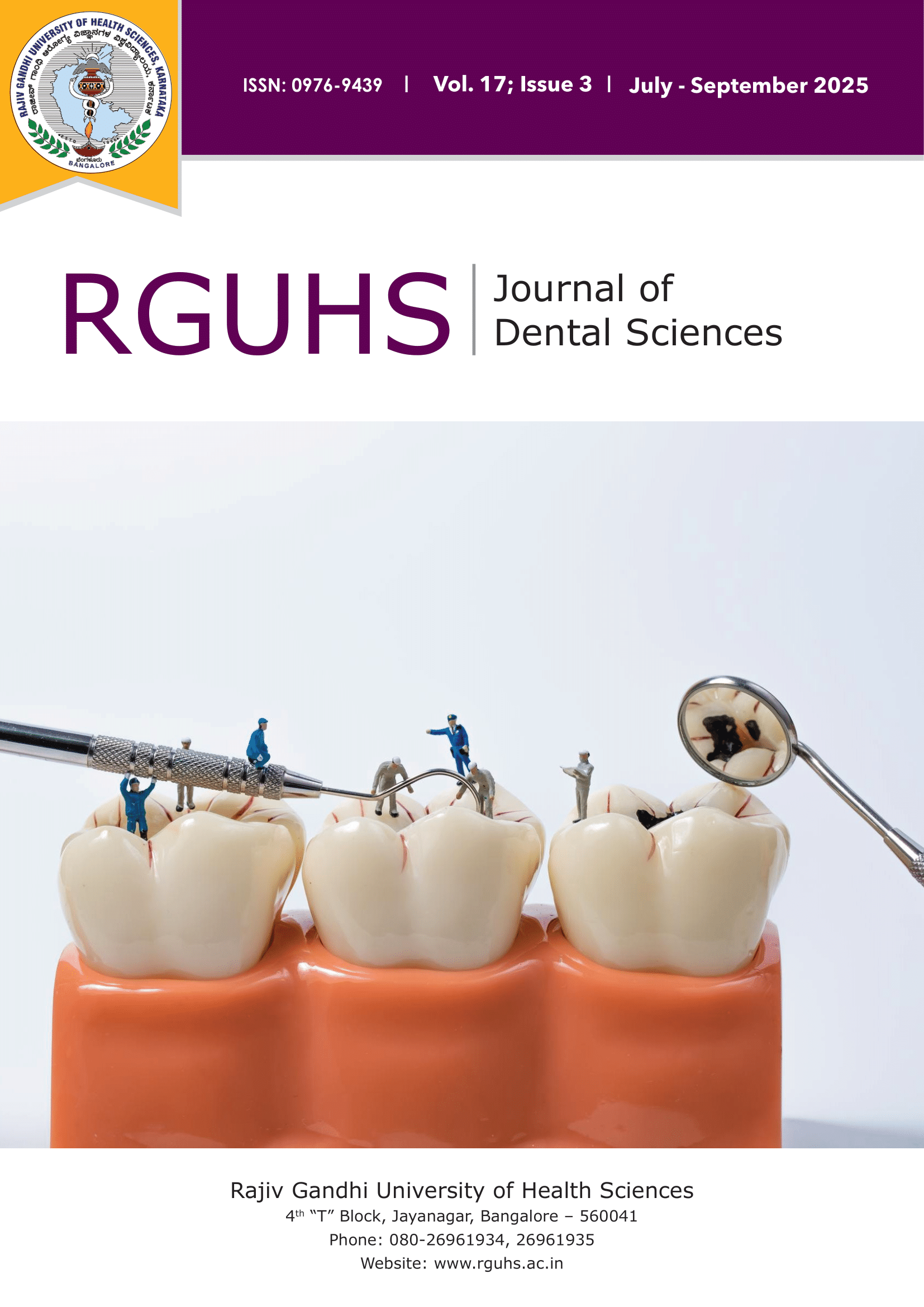
RGUHS Nat. J. Pub. Heal. Sci Vol No: 17 Issue No: 3 pISSN:
Dear Authors,
We invite you to watch this comprehensive video guide on the process of submitting your article online. This video will provide you with step-by-step instructions to ensure a smooth and successful submission.
Thank you for your attention and cooperation.
1Editor-in-chief

Abstract
None
Keywords
Downloads
-
1FullTextPDF
Article
Periodontitis is a chronic inflammatory disease affecting the supporting structures of the teeth, driven by microbial biofilm but strongly influenced by host-related factors. While bacterial pathogens initiate the disease, the extent and severity of tissue destruction often depend on genetic and epigenetic variations that regulate immune and inflammatory responses.
Genetic factors play a crucial role in individual susceptibility to periodontitis. Studies have identified polymorphisms in genes encoding cytokines, such as interleukin-1 (IL-1), tumour necrosis factor-α (TNF-α), and interleukin-6 (IL-6), which influence the host’s inflammatory response and tissue breakdown. Variants in genes related to neutrophil function, collagen metabolism, and receptor activator of nuclear factor κB ligand (RANKL) pathways also modulate disease progression. Familial aggregation and twin studies further support the heritable component of periodontitis.
Epigenetic mechanisms, including DNA methylation, histone modifications, and non-coding RNAs, regulate gene expression without altering the DNA sequence. In periodontitis, epigenetic changes can alter the transcription of pro-inflammatory mediators, immune-regulatory genes, and extracellular matrix-related proteins, contributing to dysregulated host responses. Environmental exposures, such as smoking, diet, and microbial products, can induce these epigenetic modifications, linking lifestyle factors to genetic susceptibility.
The interplay of genetic predisposition and epigenetic regulation provides insight into why some individuals develop severe periodontitis despite similar microbial challenges. Understanding these mechanisms not only helps identify high-risk patients but also opens avenues for personalized periodontal therapies and epigenetic-targeted interventions.
Supporting File
References
- Rinn JL, Chang HY. Genome regulation by long noncoding RNAs. Annu Rev Biochem 2012; 81: 145-166.
- Shastry BS. SNPs: Impact on gene function and phenotype. Methods Mol Biol 2009; 578: 3-22.